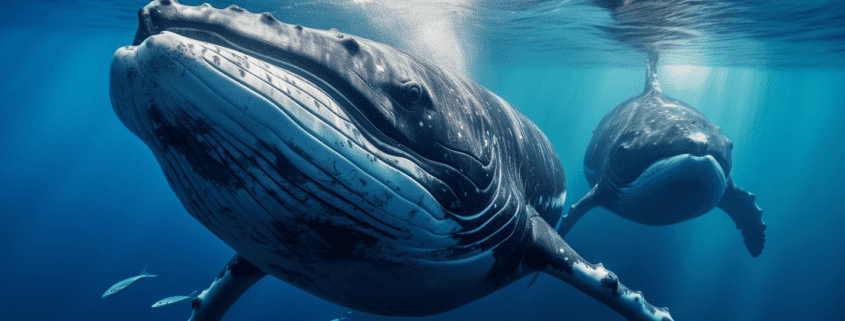Science Behind Whale Migration: An In-Depth Look for Enthusiasts
Whale migration is one of the most fascinating natural phenomena on Earth. This incredible journey, often spanning thousands of kilometres, is a subject of great interest to scientists, researchers, and wildlife enthusiasts. In this blog, we’ll delve into the science behind whale migration, brought to you by Australia Whale Experience.
Why Do Whales Migrate?
Whales migrate for two primary reasons: feeding and breeding.
- Feeding: In the summer months, whales travel to polar regions where food is abundant. They feast on krill, plankton, and small fish, storing energy in the form of blubber.
- Breeding: During the winter, whales migrate to warmer waters to give birth and mate. The warmer temperatures are more suitable for newborn calves.
How Do Whales Navigate?
Whales’ navigation abilities are still a subject of research, but several theories exist:
- Magnetic Sensing: Some scientists believe that whales can sense the Earth’s magnetic field, using it as a guide.
- Echolocation: Whales may use echolocation, emitting sounds that bounce off objects and help them understand their surroundings.
- Ocean Currents and Temperature: Whales might also use ocean currents, water temperature, and even the position of the sun to navigate.
Types of Migrating Whales in Australia
Different species of whales migrate through Australian waters, each with unique patterns:
- Humpback Whales: They travel from Antarctica to the tropical waters of Queensland and Western Australia to breed and give birth.
- Southern Right Whales: These whales prefer the southern coast of Australia for breeding.
- Blue Whales: The elusive blue whale can be spotted in areas like the Bonney Upwelling, where they feed on krill.
Challenges and Threats
Whale migration is not without its challenges:
- Climate Change: Changes in sea temperature and ice cover can affect food availability and migration routes.
- Human Interaction: Collisions with ships, entanglement in fishing nets, and noise pollution are significant threats to migrating whales.
- Predators: Orcas and large sharks may prey on young calves during migration.
Conservation Efforts
Understanding the science behind whale migration is crucial for conservation. Efforts include:
- Monitoring and Research: Ongoing research helps scientists understand migration patterns, behaviours, and the challenges whales face.
- Protected Areas: Establishing marine protected areas ensures safe passages and breeding grounds.
- Education and Awareness: Tour operators like Australia Whale Experience play a vital role in educating the public about whales and promoting responsible tourism.
Whale migration is a complex and awe-inspiring journey that continues to captivate scientists and enthusiasts alike. By understanding the science behind this incredible phenomenon, we can appreciate the beauty of these gentle giants and work towards their protection and conservation. Join Australia Whale Experience on a tour to witness this remarkable migration and learn more about the world of whales. It’s an adventure that offers not just a thrilling experience but also a deeper connection to the mysteries of the ocean.




Leave a Reply
Want to join the discussion?Feel free to contribute!